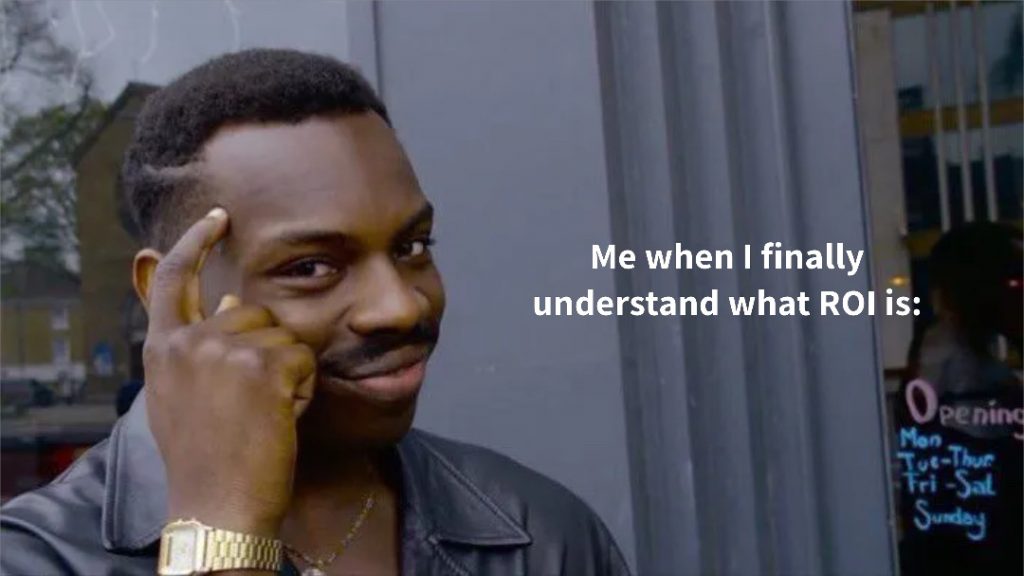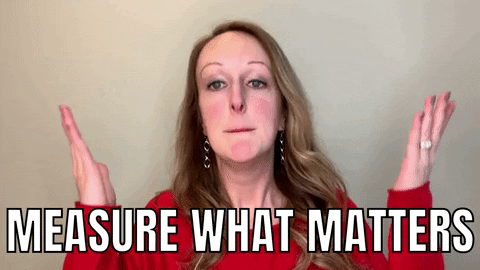Reading Time: 16 minutes

Introduction
In the digital age, the landscape of business marketing has undergone a seismic shift, with social media emerging as a front-runner in shaping consumer behavior. No longer just virtual spaces for socializing and sharing life updates, platforms like Facebook, Instagram, Twitter, and LinkedIn have evolved into powerful business tools. They serve as channels not only for building brand identities and nurturing customer relationships but also for driving sales and fostering brand loyalty.
A. Explanation of social media’s rise in the business sector
The ascent of social media in business is nothing short of revolutionary. What initially began as digital platforms for personal networking swiftly transformed into robust marketplaces and prolific grounds for brand-consumer interaction. Businesses, recognizing the sprawling reach of these platforms (billions of users and counting), began to leverage this unprecedented access to audiences worldwide.
Social media’s appeal to businesses is multifaceted. Firstly, it breaks geographical barriers, allowing brands to reach global markets at a fraction of traditional marketing costs. Secondly, it facilitates direct and instant communication with consumers, enabling real-time feedback and agile customer service. Moreover, through targeted and personalized content, businesses can engage niche markets and demographics, driving more qualified leads and, ultimately, higher conversion rates.
Yet, beyond these factors, social media brings businesses into the everyday spaces of consumers, integrating brand messages into their daily digital interactions. This subtle, yet constant, presence enhances brand recall and loyalty, especially when coupled with the right engagement strategies.
B. Overview of the significance of measuring Return on Investment (ROI) in social media campaigns
However, as investments in social media campaigns continue to swell, there arises a critical need for accountability and assessment of efficacy. Herein lies the significance of measuring the Return on Investment (ROI) of social media initiatives. Determining social media ROI is crucial for several reasons. It helps justify the allocation of marketing budgets in the face of bottom-line-centric organizational leadership. It provides a clear indication of whether specific social media strategies are working as intended or need refinement. Furthermore, ROI calculation illuminates the relationship between customer engagement through these platforms and actual sales, providing insights into consumer behavior online.
Without a measurable return, social media activities could essentially equate to shooting in the dark, creating noise without concrete outcomes. This measurement isn’t just about validating current efforts; it’s about strategically informing future ones, ensuring resources are effectively utilized for maximum returns.
C. Purpose of the article: To guide agencies in effectively gauging the success of their social media endeavors
Given this backdrop, the following comprehensive guide is designed to help agencies navigate the intricacies of social media ROI. It will delve deep into aligning campaigns with business objectives, deciphering analytics, calculating returns accurately, and optimizing strategies based on insights gathered. By the end of this guide, agencies will be equipped with the knowledge to not just execute, but excel, demonstrating the tangible value of social media in the business arena.
Join us as we unpack these layers, providing a clear roadmap for agencies aspiring to harness the full potential of social media marketing, ensuring every post, tweet, or story contributes to overarching business goals.
Understanding Social Media ROI
Navigating the world of social media marketing is no easy feat, particularly when it comes to evaluating the success and impact of your digital endeavors. One of the fundamental metrics that agencies and businesses must understand and interpret is Social Media Return on Investment (ROI). This quantitative measure not only provides insight into the effectiveness of your social media strategies but also justifies ongoing and future marketing investments.
A. Definition of Social Media ROI
- Investment: breakdown of time, money, and resources:
- Investment in the context of social media campaigns extends beyond financial expenditure. It encompasses the full spectrum of resources poured into strategy development and execution. This includes the creative brainstorming, content creation, digital tool utilization, campaign monitoring, and employee training required to run dynamic social media initiatives. Monetary investment is often the most apparent, covering expenses such as paid advertisements, content creation tools, social media management software, and collaborations with influencers or partnerships. Equally significant is the time investment, representing the hours dedicated by your team to strategize, post, engage, and analyze social media activities. Recognizing the multifaceted nature of these investments is the foundation for understanding social media ROI.
- Return: description of what constitutes a ‘return’ in the social media context
- In social media campaigns, ‘return’ is a broad term that signifies various forms of value received from your activities. While direct financial gain, such as revenue from sales, is the most straightforward metric, the return from social media marketing can also be gauged in terms of brand awareness, audience growth, lead generation, conversion rate improvement, customer satisfaction, and even long-term customer loyalty. These returns contribute to a brand’s overall market strength and future profit potential, although they may not immediately translate into monetary value. Understanding that return isn’t limited to immediate cash flow is vital. Each form of return impacts the business, from shaping public perception to driving actual sales, and contributes to the long-term strategic goals that social media campaigns support.
B. Importance of measuring Social Media ROI
- Justifying marketing spend
- In an era where every expenditure is scrutinized, being able to justify the cost of social media marketing campaigns is crucial. Calculating the ROI proves the financial logic behind these campaigns by directly linking expenditure with results, whether that’s in terms of revenue, brand visibility, or community engagement. When stakeholders can see the profitability or benefits of a campaign, securing budgets and green-lighting future projects becomes a smoother process.
- Strategy optimization
- Measuring ROI goes beyond justifying costs; it’s about fine-tuning your strategy. By understanding which aspects of your social media campaign are yielding the best return, you can intelligently allocate resources towards the most effective strategies, platforms, and content types. This ongoing process of optimization means that campaigns evolve and adapt, driven by tangible performance data rather than intuition or assumption.
- Demonstrating marketing impact and overall business value
- Finally, the ROI metric is indispensable for showcasing the impact of social media marketing on broader business objectives. It demonstrates how online interactions play a role in shaping consumer behavior, influencing sales, and building brand loyalty. By quantifying this impact, businesses can understand the value that social media marketing brings, integrating it more effectively into their overall business strategy. This holistic approach ensures that social media initiatives are not siloed campaigns but integral components of the enterprise’s road to success.

Challenges in Measuring Social Media ROI
While the importance of evaluating Social Media ROI is clear, it’s equally crucial to acknowledge that this task is often easier said than done. Several challenges and complexities arise when attempting to quantify the success of social media initiatives. Understanding these obstacles is the first step in effectively navigating them.
A. Non-financial metrics (e.g., engagement, brand awareness)
One of the primary challenges in measuring social media ROI is the heavy reliance on non-financial metrics. Unlike traditional investment scenarios where returns are typically evaluated in terms of direct revenue, social media returns often involve abstract parameters like engagement levels, brand recognition, and customer sentiment.
These metrics, while valuable, are not straightforward to translate into monetary terms. How much is a ‘like’, a ‘share’, or a positive comment worth in the context of your overall business objectives? How does increased brand awareness contribute to the bottom line? These are intricate questions that organizations grapple with, complicating the ROI calculation process.
B. Attribution modeling and understanding customer paths
The customer journey, especially in the digital space, is rarely linear. It’s common for a potential customer to have multiple touchpoints with a brand before making a purchase. This reality poses a challenge for attribution modeling, or the process of identifying which interactions contribute to the final conversion.
Which touchpoint should receive credit? Was it the Instagram ad, the influencer tweet, or the in-depth article shared on LinkedIn that sealed the deal? Or did each play a part? Accurate attribution is essential for understanding the effectiveness of different strategies, but it remains a complex, often ambiguous process.
C. Tracking conversions across different platforms and devices
With the proliferation of devices and platforms, consumers can interact with your social media content in countless ways. They might see an ad on their smartphone but switch to a desktop to make a purchase. Or they might interact with multiple social platforms before becoming a customer.
This cross-platform, cross-device behavior makes tracking conversions and pinpointing the origin of these conversions challenging. It requires sophisticated tracking mechanisms and a unified view of the customer journey across all touchpoints, which is not always feasible with standard analytics tools.
D. Time-lapse between social media activity and its financial outcomes
Finally, there’s the challenge of the time-lapse between initial customer engagement on social media and the eventual financial return. Unlike some direct marketing tactics, social media efforts often focus on building relationships and nurturing leads, which doesn’t always translate to immediate sales.
For instance, a user might follow a link from a Facebook post to your website, browse around, and then leave. However, days, weeks, or even months later, they might return to make a purchase. In such cases, attributing that revenue to the original social media activity requires a long-term tracking strategy and a consideration of the lag in ROI calculation.
Setting Up for ROI Measurement: Aligning with Business Objectives
To harness the full power of social media marketing, it’s imperative not just to act but to measure and understand those actions’ business impact. This journey begins with setting the stage correctly, aligning every move with the enterprise’s heart – its core objectives. Here, we explore how to intertwine social media efforts with broader business goals, ensuring every post, tweet, or update holds purpose and measurable value.
A. Identifying and understanding key business objectives
Before diving into specific social media strategies, it’s crucial to step back and consider the bigger picture by focusing on overarching business objectives. What is your organization aiming to achieve, and how can social media propel you toward these goals? Typically, objectives fall into several categories, including:
- Brand awareness: This foundational objective focuses on expanding your brand’s recognition and visibility, making sure your message reaches and resonates with the desired audience. Social media campaigns aimed at enhancing brand awareness often prioritize reaching new audiences and engaging them through compelling, shareable content.
- Lead generation: Here, the emphasis is on sparking interest and collecting information from potential customers. It’s about drawing the audience into the sales funnel, using social media as a platform for initiating customer journeys, whether through targeted ads, compelling calls-to-action, or exclusive content that requires signing up.
- Sales conversion: The ultimate goal for many businesses is converting interest into action – in other words, making sales. Campaigns with this objective in focus might feature product showcases, customer testimonials, or special offers that encourage direct purchases through social media platforms.
- Customer loyalty/retention: Beyond the initial sale, businesses thrive on repeat customers and brand advocates. Objectives in this realm revolve around deepening customer relationships, fostering community, and maintaining ongoing engagement through things like loyalty programs, customer support, and value-added interaction on social media.
B. Setting SMART (Specific, Measurable, Achievable, Relevant, Time-Bound) social media goals
With these key business objectives in mind, it’s time to translate them into actionable social media goals. Employing the SMART criteria can refine your ambitions, ensuring they are clear, realistic, and aligned with broader strategies.
For instance, instead of vaguely aiming to “increase brand awareness,” a SMART goal would be “growing the brand’s Twitter followers by 25% over the next six months.” This approach makes your goal specific, measurable (trackable through follower count), achievable (with an appropriate strategy), relevant to broader brand awareness ambitions, and time-bound, allowing for focused effort and clear evaluation.
C. Mapping social media metrics to these goals
Once SMART goals are established, the next step is identifying which social media metrics will serve as reliable indicators of progress. This process involves mapping tangible, quantifiable metrics to your broader goals. For example:
- For brand awareness, track metrics like follower numbers, reach, impressions, and engagement rates. These indicators can reveal how widely your content is being disseminated and how it’s resonating with audiences.
- For lead generation, focus on conversion rates from call-to-action elements, click-through rates for landing pages, or the number of form submissions or sign-ups.
- Sales conversion goals can be measured through metrics like conversion rates, click-through rates on product pages, and direct sales from social media referrals.
- Customer loyalty might be assessed through repeat interactions, community engagement levels, sentiment analysis, or direct customer feedback and testimonials shared on social media platforms.
By setting up this framework of objectives, SMART goals, and corresponding metrics, businesses can embark on their social media campaigns with a clear roadmap. This approach ensures that activities are strategic, targeted, and, importantly, measurable, setting the stage for accurate ROI assessment down the line.

Essential Components of a Successful Social Media Campaign
Embarking on a social media campaign requires more than sporadic postings and waiting for likes to accumulate. Success in this dynamic digital landscape hinges on several critical factors that, when executed effectively, can amplify your reach and solidify your brand’s online presence. Below, we delve into these essential components, each serving as a cog in the well-oiled machine that is a successful social media campaign.
A. Target Audience Analysis
Every impactful social media campaign is rooted in a deep understanding of one’s target audience. Knowing whom you’re speaking to is paramount, as it influences every subsequent decision, from content creation to choosing communication channels. This analysis isn’t merely about demographics; it’s about psychographics too — understanding your audience’s behaviors, preferences, and pain points. By conducting thorough audience research, you can tailor your messaging to resonate profoundly, address core needs, and spark meaningful engagement.
B. Content Strategy
Content is the currency of any social media campaign, demanding as much strategic thought as any financial investment. It’s not just about what you say; it’s about how, when, and why you’re saying it.
- Quality: Your audience is inundated with content every waking hour. Cutting through that noise requires more than run-of-the-mill posts; it necessitates high-quality, compelling content that provides value. This means well-crafted visuals, engaging narratives, and an unmistakable touch of your brand’s unique voice and personality.
- Relevance: Even the highest quality content can miss the mark if it’s not relevant to your audience. Every piece of content should serve a purpose, whether it’s solving a problem, providing new insights, or evoking specific emotions. It must align with both your brand’s values and your audience’s expectations or curiosities.
- Consistency: A sporadic posting schedule can erode even the most enthusiastic audience’s interest. Consistency goes beyond just frequency; it’s also about the steadiness of your message, style, and quality level. This predictability in posting helps maintain audience engagement and fortifies your brand’s reliability.
C. Choosing the Right Platforms
Not all social media platforms are created equal, especially concerning your specific goals and target audience. Where does your audience spend their time? What kind of content do they prefer? These questions are critical. Your choices should reflect where your messages will resonate most, whether that’s the more professional atmosphere of LinkedIn, the visual realms of Instagram and Pinterest, or the fast-paced world of Twitter. By selecting platforms that align with your audience’s habits and preferences, you enhance engagement opportunities.
D. Utilizing Paid Promotions Strategically
Organic reach is a worthy goal, but the reality of today’s social media landscape often requires a financial push. Paid promotions and advertisements can amplify your reach, driving targeted traffic with more precision. However, this needs strategic thinking: understanding when to invest, how much to spend, and how to segment the audience for maximum ROI. A strategic approach to paid promotions involves A/B testing, monitoring, and ongoing optimization to ensure your investment translates into measurable results.
Tools and Techniques for Measuring Social Media ROI
In the world of digital marketing, the adage “what gets measured gets managed” rings especially true. The success of social media campaigns hinges not just on robust execution but also on meticulous measurement. By leveraging cutting-edge tools and techniques, businesses can glean actionable insights, refining their strategies in real-time to maximize ROI. In this section, we’ll explore the instrumental analytics tools available and the best practices for monitoring your campaign’s performance effectively.
A. Overview of social media analytics tools
Navigating the maze of social media performance requires robust analytics tools. These solutions help parse the vast amount of data generated, offering insights into campaign effectiveness and customer behavior.
- Native platform insights (Facebook Insights, Twitter Analytics, etc.): Most social media platforms offer built-in analytics that provide a wealth of data. For instance, Facebook Insights and Twitter Analytics detail your content’s performance, audience demographics, engagement, and more. These native tools are invaluable for understanding how your content performs on each specific platform, allowing for platform-specific strategy adjustments.
- Third-party tools (Hootsuite, Buffer, Google Analytics, etc.): To supplement native analytics, third-party tools like Hootsuite, Buffer, and Google Analytics offer additional capabilities. These tools can aggregate data across multiple platforms, provide deeper analytics, and even integrate social media metrics with broader web performance indicators. This holistic view is crucial for understanding the full impact of social media activities on overall business objectives.
B. Techniques for measuring campaign performance
With the right tools in hand, marketers must also employ strategic techniques to track campaign effectiveness. This process involves more than just counting likes and shares; it’s about understanding how social media activities influence customer behavior and business outcomes.
- UTM parameters for tracking online activity: UTM parameters are tags added to a URL, helping to track a visitor’s path in the online ecosystem. By using UTM codes in your social media links, you can identify which posts or ads drive traffic, conversions, and other relevant actions. This data is instrumental for understanding which content or platforms are most effective and optimizing ROI.
- Conversion tracking setup: Beyond mere clicks and interactions, understanding how social media contributes to ultimate conversion goals—be it newsletter sign-ups, product purchases, or another metric—is vital. Conversion tracking involves setting up mechanisms to track users’ actions after they interact with your social media content, connecting the dots between engagement and end goals.
- Custom dashboards for real-time monitoring: Custom dashboards, such as those offered by Google Data Studio or integrated within third-party tools, compile key metrics in one visual, easy-to-understand interface. These dashboards offer real-time performance insights, allowing for immediate reactions and adaptations. By monitoring campaign performance live, marketers can make informed decisions to tweak or pivot strategies, ensuring resources are always optimally allocated.

Optimizing Social Media Campaigns Based on ROI Analysis
Harnessing the power of ROI analysis doesn’t end at mere measurement. The true value lies in using these insights to refine and optimize your social media campaigns, turning analytical observations into strategic actions that boost your marketing effectiveness and business outcomes. In this section, we dive into the iterative process of optimization based on ROI analysis, focusing on pinpointing areas for improvement, experimenting with solutions, and making informed decisions about resources and timelines.
A. Identifying Underperforming Areas and Strategies for Adjustment
ROI analysis can illuminate segments of your campaign that aren’t meeting expectations. Perhaps certain content themes aren’t resonating, or maybe one social platform is underperforming others. Identifying these areas requires a deep dive into your data:
- Engagement Metrics: Low engagement rates might indicate content mismatches with audience preferences. Adjustments may involve revising your content calendar, investing in higher-quality media, or tailoring your messaging.
- Conversion Metrics: If your campaign sees high engagement but low conversion, the issue could lie in the call-to-action, landing page experience, or the offer itself. Tweaking these elements could better align with your audience’s conversion triggers.
B. Techniques for A/B Testing
To objectively determine what adjustments will improve a campaign, A/B testing is invaluable. This involves altering one variable at a time to see what impact it has on your campaign’s performance. Techniques include:
- Creative Elements: Test variations in imagery, video, ad copy, or CTA buttons to see what resonates more with your audience.
- Targeting Refinements: Experiment with different audience segments, testing variations in demographics, interests, or behaviors to identify the most responsive groups.
C. Investment Redistribution and Resource Allocation
ROI analysis isn’t just about identifying what’s working; it’s about reallocating resources to push these successful elements further:
- Budget Adjustments: If certain platforms or content types are yielding higher ROI, redirecting funds to these areas could amplify success.
- Team Resources: It may be beneficial to realign team responsibilities or provide additional training in high-performing areas to capitalize on these opportunities.
D. Timeline Considerations for Effective Decision-Making
Finally, understanding that social media isn’t always about instant results is crucial. Building brand awareness, loyalty, or community can take time. However, immediate, short-term actions based on ROI analysis must be balanced with long-term strategic goals:
- Immediate Actions: Quick wins could involve pausing ad sets that aren’t delivering, adjusting bidding strategies, or responding promptly to customer feedback on social media.
- Long-Term Planning: Regular ROI analysis can help shape future campaigns, guiding strategies for content themes, platform focus, or community-building initiatives.
Reporting and Storytelling: Communicating ROI to Stakeholders
One of the pivotal stages in the social media marketing cycle that often determines a campaign’s future direction and potential investment is the communication of results to stakeholders. Whether presenting to clients, company executives, or business partners, the way you package and convey your social media ROI can significantly impact their understanding and the decisions they make. In this section, we explore how agencies can craft compelling narratives around the hard data and effectively communicate the holistic impact of social media campaigns.
A. Developing Comprehensive Reports
The foundation of effective communication is a comprehensive report that doesn’t just focus on numbers but interprets what they mean for the business. This involves:
- Integrating Diverse Metrics: Combine quantitative data (like click-through rates, conversions, etc.) with qualitative insights (such as customer sentiment or brand perception changes) to provide a complete picture.
- Including Comparative Analysis: Highlight progress by comparing current results with past performance, industry benchmarks, or initial objectives, demonstrating growth, challenges, and opportunities.
B. Visualizing Data Effectively
Data visualization transforms complex data into intuitive, easy-to-understand visuals, allowing stakeholders to grasp complicated concepts or identify new patterns quickly.
- Use of Charts and Graphs: Convert your data into various charts, like line graphs for tracking changes over time, bar charts for comparing different items, or pie charts for showing a piece’s proportion to the whole.
- Interactive Dashboards: Advanced tools allow for the creation of interactive dashboards, enabling users to explore data sets by themselves and make the experience more engaging.
C. Communicating Findings and Business Impacts in a Non-Technical Manner
When discussing ROI, it’s easy to delve into jargon. However, effective communication means breaking down findings into relatable insights:
- Simplify Complex Data: Use everyday language to explain key metrics and how they influence broader business goals like sales growth, market expansion, or customer retention.
- Relate to Business Objectives: Directly tie your analytics back to the business’ strategic objectives, ensuring stakeholders understand the ‘why’ behind your efforts and their outcomes.
D. Using Storytelling to Add Context to the Numbers
Storytelling embeds statistics within real-world contexts, making the information more relatable and memorable.
- Humanize the Data: Share customer testimonials, anecdotes or case studies that your data has highlighted, demonstrating the human impact of your social media efforts.
- Create a Narrative Arc: Present your data within a story framework with a clear beginning, middle, and end. Set the scene by discussing the initial challenges or objectives, then the actions taken, and conclude with the results and what they mean for the future.

Conclusion
As we navigate the ever-evolving landscape of digital marketing, one truth remains constant: the profound impact of social media on business success. Throughout this comprehensive guide, we’ve delved into the intricacies of conceptualizing, executing, measuring, and refining social media strategies, always circling back to one pivotal indicator – the Return on Investment (ROI). As we draw this discussion to a close, let’s recap the journey we’ve embarked on and the milestones we’ve covered.
A. Recap of the Necessity and Benefits of Understanding and Tracking Social Media ROI
Understanding and tracking social media ROI isn’t a mere supplementary component of your marketing strategy; it’s the compass that guides every decision and action within your campaigns. By dissecting the various elements contributing to a robust ROI – from setting aligned business objectives and SMART goals, to choosing the appropriate metrics, employing effective tools, and interpreting data accurately – we’ve seen how this singular focus can be the differentiator between a campaign that simply makes noise and one that strikes a resonating chord with its intended audience.
The benefits of this deep comprehension are manifold. It not only justifies your marketing spend, optimizing the allocation of resources, and strategy, but also illuminates the direct correlation between your social media efforts and your business’ bottom line. In essence, a firm grasp on your social media ROI translates to empowered, informed business growth strategies.
B. Encouragement to Approach Social Media Campaigns with Strategic, Data-Informed Decisions
In the realm of social media marketing, where trends fade as quickly as they surface, the power lies in strategic, data-informed decision-making. As we’ve explored through real-world case studies, the success of your campaigns hinges on a continuous cycle of analysis, adaptation, and innovation.
This approach allows you to not only respond to the current landscape but also anticipate future shifts, keeping your strategy agile and responsive. It’s an invitation to marry creativity with analytics, intuition with evidence, ensuring that every post, tweet, or story you craft is a strategic step towards your overarching business objectives.
C. Call-to-Action
But the journey doesn’t end here. The beautiful complexity of social media is that it’s a space of unending evolution, learning, and growth. So, we invite you to engage with us further. Share your insights, experiences, or inquiries. Whether you’re celebrating a high-ROI campaign or grappling with the intricacies of analytics, your journey contributes to a richer, more nuanced collective understanding.
In closing, mastering social media ROI is both an art and a science, demanding a blend of analytical prowess, creative intuition, and strategic foresight. As you embark on or continue your digital marketing journey, may this guide serve as a beacon, illuminating your path to measurable, impactful success. Here’s to crafting resonant stories, forging authentic connections, and driving revolutionary growth in the digital sphere, one post, one click, one campaign at a time.

